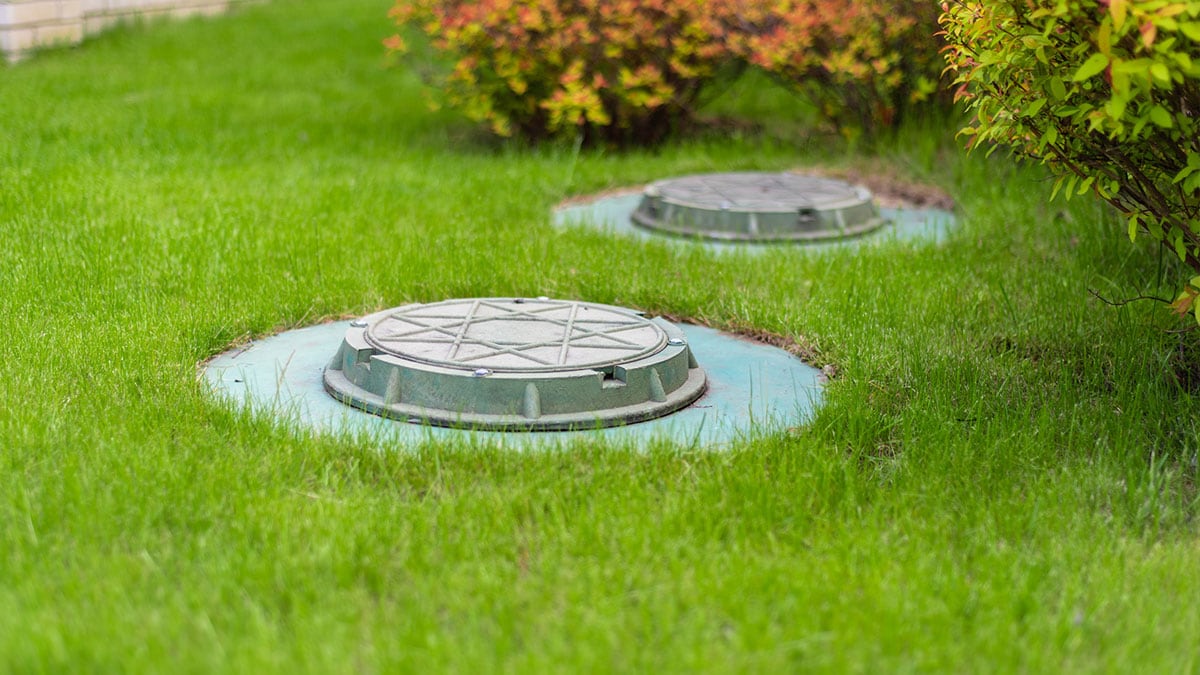Key points
- Heavy rains, severe flooding, or other types of emergency events could damage sewer systems and cause an overflow of untreated wastewater into communities and the environment.
- Know how to protect your septic or onsite wastewater system from damage caused by heavy rains, floods, or other emergencies.
Overview

Heavy rains, severe flooding, or other types of emergency events could damage sewer systems and cause an overflow of untreated wastewater into communities and the environment.
Warning!
Maintain your septic system to prevent damage from heavy rains or floods.
A well-maintained and constructed septic system will better withstand the stresses of heavy rains or flooding. Regular inspection is necessary to ensure proper functioning. During heavy rains and floods, the ground can become saturated, preventing proper operation of the system. For example, a septic tank can collapse or float out of position.
Signs that a septic system is not working properly include the following:
- Sinks drain slowly
- Toilets drain slowly
- Floor drains overflow
- Sewage becomes visible outside the home
For more information about septic systems, see the U.S. Environmental Protection Agency's (EPA) Managing Septic Systems to Prevent Contamination of Drinking Water.
Protect your septic and onsite wastewater systems
Before an emergency
To prepare your septic system before an emergency such as a flood, hurricane, or earthquake:
- Seal the manhole and/or inspection ports to keep excess water out of the septic tank
- Be sure your septic tank is at least half full to prevent it from collapsing or floating
- If your septic system requires electricity:
- Turn off the pump at the circuit box before the area floods.
- Waterproof all electrical connections to avoid electrical shock or damage to wiring, pumps, and the electrical system.
- Turn off the pump at the circuit box before the area floods.
During an emergency
- During an emergency such as a flood, hurricane, or earthquake, reduce the amount of water used by limiting toilet flushing, dishwashing, washing clothes, and showering.
- Severe flooding can put drinking water wells at increased risk for contamination from flood water that may contain sewage. Avoid contact with any standing water that may contain sewage.
After an emergency
Be aware that flood water may contain sewage.
Caution!
Take the following precautions:
- Avoid contact with any septic system electrical devices until they are dry and clean.
- Do not pump out the septic tank more than halfway or the tank may float out of the ground.
- Reduce all nonessential water use (for example, dishwashing, washing clothes, showering).
- Flush toilets as little as possible or use a temporary toilet.
If you suspect septic system damage, get the system professionally inspected and serviced. Contact your health department for a list of septic system contractors who work in your area.
Resources
- CDC. Potential Sanitation Solutions During an Emergency Response
- National Environmental Services Center. First Aid for a Flooded Septic System
- EPA. Septic Systems – What to Do After a Flood
- EPA. Emergency Response for Drinking Water and Wastewater Utilities
- NASD. Flooded Private Sewage Systems: Safety, Sanitation and Clean-Up Concerns
- EPA. Septic (Onsite) Systems, Tools and Resources
- Cornell University. Water Quality Information for Consumers: Septic Systems and Wastewater
- Public Works Group. Video: Demo of Sewer Backflow Prevention Device.
- FEMA. Install Sewer Backflow Valves
- Water Environment Research Foundation. Emergency Response Plan Guidance for Wastewater Systems
